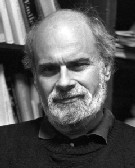 When philospher-art critic Arthur C. Danto talks, lots of people listen.
When philospher-art critic Arthur C. Danto talks, lots of people listen.
About 130 people showed up to hear the art critic for “The Nation” today at one of the Pennsylvania Academy of Fine Art‘s lunchtime Visiting Artist Lectures, in which he explained his philosophy of just what modern art is–and why the art world needs him to be a critic rather than a philosopher. His talk, sprinkled with the names of philosophers who had gone before him including Hegel and Wittgenstein, seemed perfectly pitched for an audience apparently filled with philosophy students as well as art scholars.
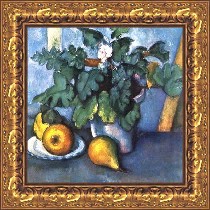 Danto started writing about art at the time when the pedestal and the picture frame disappeared. Gone were two key signposts announcing that what you’re looking at is a piece of art (shown, a Cezanne in a picture frame).
Danto started writing about art at the time when the pedestal and the picture frame disappeared. Gone were two key signposts announcing that what you’re looking at is a piece of art (shown, a Cezanne in a picture frame).
 “Here’s art that can’t be told apart from a shipping carton,” Danto said, recounting his eureka moment in front of Andy Warhol’s facsimile Brillo boxes (shown) in 1964.
“Here’s art that can’t be told apart from a shipping carton,” Danto said, recounting his eureka moment in front of Andy Warhol’s facsimile Brillo boxes (shown) in 1964.
Here was a piece of art that looked no different from a shipping crate. Yet art it was indeed, just as the shipping crate was not art. So how’s a viewer to determine whether something is or isn’t art, without a pedestal and without a frame and without the usual art content of the past?
Danto’s answer? Art had to have content–and we’re not talking about boxes of Brillo inside. Art had to have meaning. A work of art must be about something and must somehow embody that meaning, Danto said.
And the job of the philosopher was usurped by this new art, that generated its own meanings and artists that generated their own philosophies. Minimalists and Conceptualists were philosophers about what they thought an art work was. (Pop art, he said, was more social than philosophical, aiming to overcome the division between high art and popular art.)
With the role of philosopher taken over by artists, the role of the critic became all the more important, said Danto.
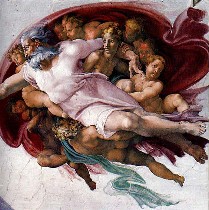 Art’s meaning needed to be decoded by critics. No longer could a piece of art be looked at and understood all at once, the way Michelangelo’s audience understood the message painted on the Sistine Chapel ceiling (detail shown). As Hegel had said in the 1800s, art no longer satisfied our spiritual needs.
Art’s meaning needed to be decoded by critics. No longer could a piece of art be looked at and understood all at once, the way Michelangelo’s audience understood the message painted on the Sistine Chapel ceiling (detail shown). As Hegel had said in the 1800s, art no longer satisfied our spiritual needs.
Danto also pointed out the Minimalism, Conceptualism and Pop art all undercut some of the old assumptions about art, including that it was a work of genius, that it required skill and the artist’s hand, or that it had to be an object of some special kind. A work of art could be anything–a hole, a game, words.
If anything could be art, then that was the end of art as it had been historically understood. “It was the first time civilization had been in such a situation. Artists could make what they wished.”
Danto also questioned the painting-was-dead era. “Painting was contested for ideological reasons,” Danto said. It represented white male, colonialist elitism. Philosophically, though, painting was still a player in the art world. There’s no reason in the concept of art to declare the end of painting, Danto said.
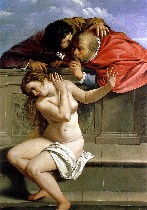 He added that all art was “conceptual, with a small ‘c,'” including Michelangelo and Artemisia Gentileschi (shown, her “Susannah and the Elders”), and then went on to say that art from other cultures for the most part no longer had the immediacy of understanding that religious art from primitive cultures or the Middle Ages had, thanks to globalization.
He added that all art was “conceptual, with a small ‘c,'” including Michelangelo and Artemisia Gentileschi (shown, her “Susannah and the Elders”), and then went on to say that art from other cultures for the most part no longer had the immediacy of understanding that religious art from primitive cultures or the Middle Ages had, thanks to globalization.
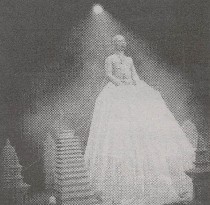 “Everyone is entering into the same consciousness structure,” he said, noting similar problems for critics across the globe, including China (shown, Zhang Huan’s “Buddhist Relics”) and Japan. He saw this pass as a confirmation that his original position that art as we knew it prior to the ’60s was dead and that we were living in a different kind of time.
“Everyone is entering into the same consciousness structure,” he said, noting similar problems for critics across the globe, including China (shown, Zhang Huan’s “Buddhist Relics”) and Japan. He saw this pass as a confirmation that his original position that art as we knew it prior to the ’60s was dead and that we were living in a different kind of time.
From all this, I gathered that artblog was needed more than ever. It’s a confusing art world out there, and somebody’s got to discuss its implications.
I’m not sure that artblog is what Danto had in mind, however.









